Expense properties
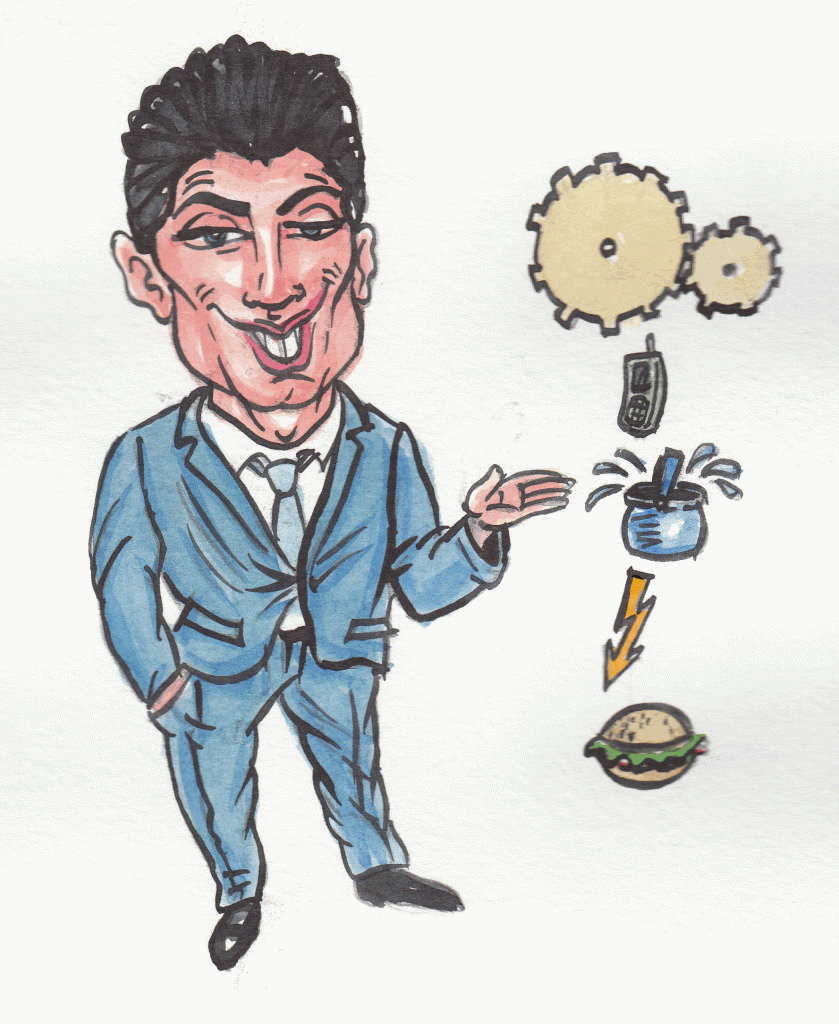
Here is an introduction to an old theory about expenses, dominant during the industrial revolution.
John Hudson: How should we deal with expenses, from a business perspective? Do they have any financial properties we can manage?
Garret: Most people group expenses based on their nature – communication, salaries, utilities, food, etc. – but such groupings don’t help us understand relationships between our profits and expenses.
There are basically two categories of expenses, each with a very different impact on profits. You have to manage them separately to achieve the best results.
Fixed costs (FC) – These are costs that do NOT depend on the quality or quantity of goods or services a business produces. Examples are office rent, salaries for administrative personnel, business licenses, lawyer’s fees, and interest expenses on long-term loans. Fixed costs vary over time, but whether they’re higher or lower at any given time has nothing to do with production volume. For analysis, we usually add them all together.
Variable costs (VC) – These costs rise and fall as a business’s activity increases and decreases. If you produce more, these costs go up – and the other way around. Most variable costs relate to production itself – such as raw material and direct labor costs. These costs can be broken down by individual product – for example, making one unit of a particular product might require $10 worth of raw materials and $5 of labor. The VC for that product would be the sum of the two costs, or $15.
So ultimately, total costs (TC) follow this formula:
TC = FC + (VC x number of items produced)
And now a case study…
Breaking Even
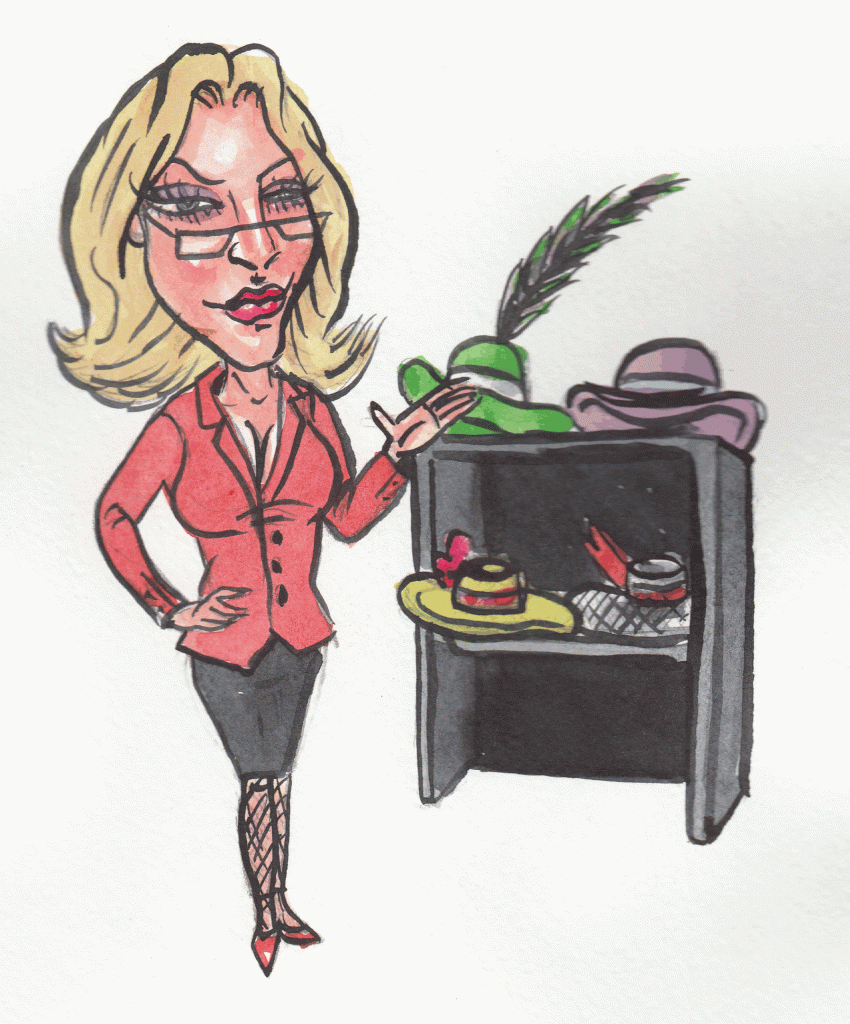
Ann: I had an exciting new idea about producing luxury hats. Using my networking skills, I connected with a wealthy and experienced investor and explained this exciting opportunity in the high-end clothing market, describing our vision and brand and all that. I was rolling right along, very intense, but he stopped me with a silly question. “I see you have passion and vision, but tell me: how many hats would we have to sell, to meet all our expenses?” I told him my accountant had all that sort of stuff, and promised I’d provide the information in a few days. Now I need your help, dear friends. I understand what you’ve been saying about expenses and costs, and I have some sales projections, but I don’t know how to relate the two!
Garret: Well, well, well. I told you you’d need me.
As you all know, starting a business requires a certain amount of investment. Some require bigger initial investments than others, but there is a special point in the bright future every investor looks toward: the moment his initial investment will be repaid. It’s called the “break-even point” (BEP), and we all need to know about it, to make profound business decisions. It’s actually the point at which net profit equals zero – the point when your total sales have finally matched your total costs up to that moment. Here’s how it looks as an equation:
Sales (S) – Total cost (TC) = 0
From the previous chapters, we know:
TC = Fixed costs (FC) + {Variable unit costs (VC) x number of items sold (Q)}
Sales = Sales price (SP) x Quantity
Let’s plug the equations for TC and S into our first equation, then restate it like this:
(SP x Q) – FC – (VC x Q) = 0
Q x (SP – VC) – FC = 0
Finally, we get:
Q = FC / (SP – VC)
This tells us the quantity we have to sell to pay off all our costs.
Here’s an example of applying that in practice:
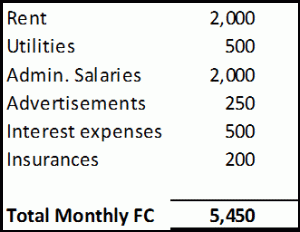
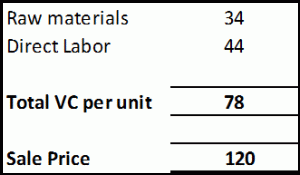
So your BEP = 5450 / (120-78) = 130 (a rounded number).
In other words, you have to sell 130 units at $120 per unit to repay all your costs – to break even.
The graph below shows different levels of expenses (green line) and sales (purple line). The break-even point shown is where you have sales of 130 units (at $120 each) and $15,600 in revenue. (Multiplying your BEP by your sale prices gives you your break-even revenue or BER.
BER = BEP x SP = 130 x 120 = 15,600)
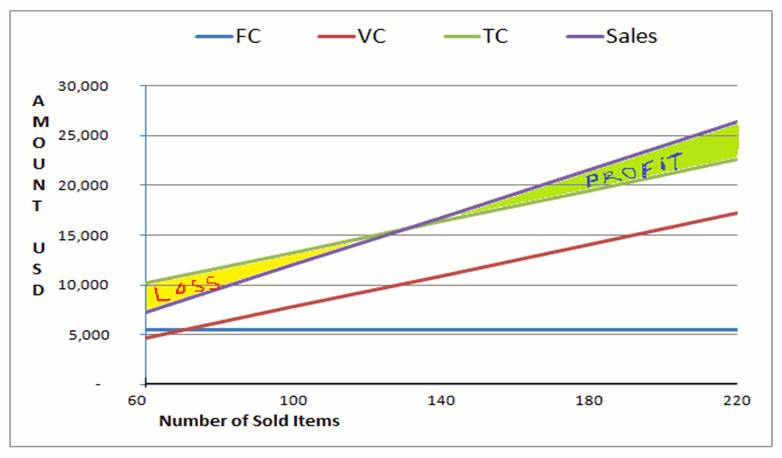
As you can see, the more units you sell, the greater your profits, and the larger your margins. But how wide can these “scissors” open? If you made the incorrect assumption that your production capacity was infinite, without any change in fixed costs, you could get the idea (also incorrect) that by selling more and more, your total costs (TC) would eventually be almost the same as your variable costs (VC)… No, size matters.
This is an old concept from the days of the industrial revolution. By applying it, big companies had the market advantage because their fixed costs were actually insignificant, compared to their total costs. During the industrial revolution, if you could sell more units, you could have bigger profits AND bigger margins.
Of course, it isn’t easy to apply such an idea, especially in these times. Growth has implications.
———————–
Thomas: This model is useful, but it has its assumptions, you know. First, it assumes you are going to sell everything you produce. The other thing is that fixed costs are not so fixed; they’re more like stepped costs – you have to change them as you hit certain levels of production. Take, for example, rent expenses: you have a certain production at one location; if you want to increase production beyond that capacity you have to rent another location.